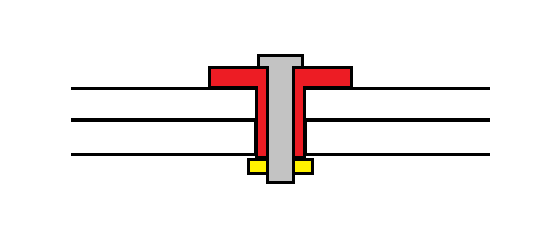I recently had a project where I made an aluminum linkage (similar to a scissor lift) operated by linear actuators. Aluminum pieces were fabricated from 6061 "standard" aluminum stock, 6mm (0.25 inch) thick. The bars are at most 750x75mm (30x3"). The application was mostly cosmetic (for a special effect) rather than lifting or exerting much force.
I used shoulder bolts with a nylon washer between the aluminum pieces to reduce friction, and standard zinc-plated steel washers on the exterior sides.
The problem I encountered was tightening the bolt too much would result in too much friction, whereas too loose would result in one of the aluminum pieces coming slightly off the shoulder of the bolt, skewing, and causing similar problems.
What would be a better way to create a reliable pivot point that doesn't require constant adjustment?
I put together this illustration as an example:

